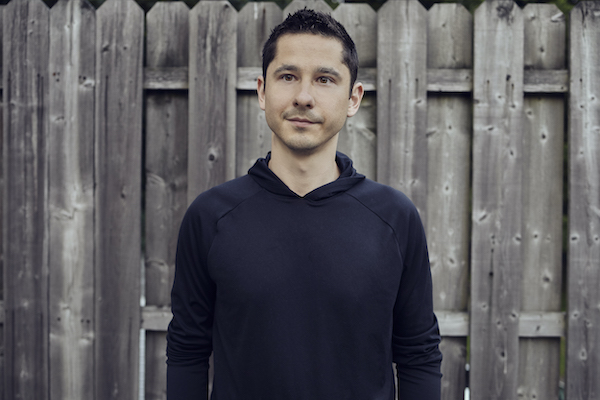Jun 3, 2025 11:25 AM
In Memoriam: Al Foster, 1943–2025
Al Foster, a drummer regarded for his fluency across the bebop, post-bop and funk/fusion lineages of jazz, died May 28…

Eldar Djangirov’s latest album is titled Rhapsodize.
(Photo: David Patino)To display Promethean chops is pianist Eldar Djangirov’s long-established default basis of operations, and his new, self-released album, Rhapsodize (Twelve Tone Resonance), is no exception. On this program of originals and covers, the pianist—joined in the studio by bassist Raviv Markovitz and drummer Jimmy Macbride—seamlessly blends the languages of classical and jazz.
“It represents all 12 tones on the keys, and the various resonances you can capture and replicate in how you want the flow of your song to sound,” Djangirov said about the name of his label. “They can be melodic, or harmonic, or rhythmic—or the heart.”
Then he addressed the album title. “Literally, a rhapsody is to speak about something with great enthusiasm, which I feel encapsulates the entire album,” he said. “I’m interested in many different aspects of music. I want to incorporate them in a way that’s genuine to me.”
Synth-generated backgrounds complement the melancholic-to-joyful emotions contained in the funky title track and the gospel-meets-classical “In July,” both original tunes. Elsewhere, the pianist delivers a reflective reading of “Willow Weep For Me” and creates an operatic arc for Soundgarden’s “Black Hole Sun.”
The trio operates with remarkable precision and interplay throughout Rhapsodize. “It’s a never-ending dance, a micro-adjustment on a millisecond level that happens with three musicians who focus on their placement in context with each other,” he said.
“Eldar’s technical mastery is second to no one, but what’s blown me away is his multifaceted approach and ability to evoke emotion in so many different worlds,” Markovitz said.
In conversation, Djangirov breaks down complex ideas to fundamental components, an attribute he’s deployed in taking control of his musical production since his 2015 trio album, World Tour Vol. 1. Djangirov sold that album via his website, with selected tracks posted on YouTube. Now he’s “further circumventing the system” by releasing Rhapsodize—and, last December, Letter To Liz, which showcased his meditations on a cohort of Great American Songbook standards—on a variety of platforms.
The databases and infrastructure that Djangirov has accumulated over the years are helping him withstand the enforced isolation and gig cancellations caused by the COVID-19 pandemic. He’s generating income from increased online lessons, the membership platform Patreon, YouTube royalties and his catalog.
Key Madness Duo, a plugged-in project with drummer Ludwig Afonso, recently issued a live EP, and as of early April, the keyboardist was fast-tracking another electronic recording.
“It’s really been therapy,” Djangirov said of this phase of his creative process. “So much about the solitude is meditative and therapeutic; I think the music will reflect that.” DB
This story originally was published in the June 2020 issue of DownBeat.

Foster was truly a drummer to the stars, including Miles Davis, Sonny Rollins and Joe Henderson.
Jun 3, 2025 11:25 AM
Al Foster, a drummer regarded for his fluency across the bebop, post-bop and funk/fusion lineages of jazz, died May 28…

“Branford’s playing has steadily improved,” says younger brother Wynton Marsalis. “He’s just gotten more and more serious.”
May 20, 2025 11:58 AM
Branford Marsalis was on the road again. Coffee cup in hand, the saxophonist — sporting a gray hoodie and a look of…

“What did I want more of when I was this age?” Sasha Berliner asks when she’s in her teaching mode.
May 13, 2025 12:39 PM
Part of the jazz vibraphone conversation since her late teens, Sasha Berliner has long come across as a fully formed…

Roscoe Mitchell will receive a Lifetime Achievement award at this year’s Vision Festival.
May 27, 2025 6:21 PM
Arts for Art has announced the full lineup for the 2025 Vision Festival, which will run June 2–7 at Roulette…

Benny Benack III and his quartet took the Midwest Jazz Collective’s route for a test run this spring.
Jun 3, 2025 10:31 AM
The time and labor required to tour is, for many musicians, daunting at best and prohibitive at worst. It’s hardly…